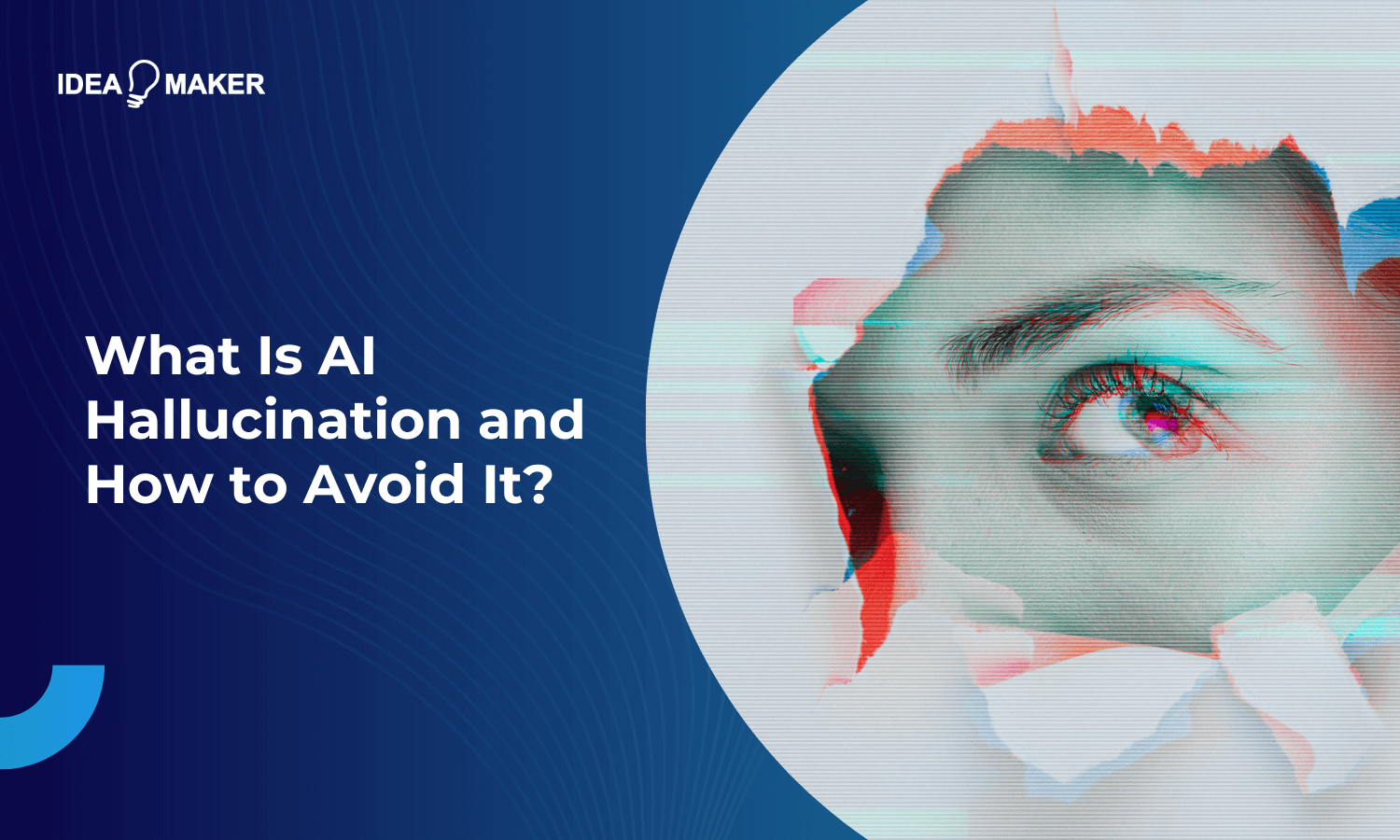Table of Contents
If you keep up with AI news, you’ve likely heard the term “hallucination” used to describe flawed responses produced by models like ChatGPT. This is becoming an increasingly common occurrence, with artificial intelligence algorithms “hallucinating” about 20-25 percent of the time, causing inaccurate information to permeate many AI outputs. So, what exactly is an AI hallucination and why do they happen? Keep reading to find out.
What Is AI Hallucination?
AI hallucination refers to when machine learning models generate imaginative but inaccurate outputs that do not reflect reality. For example, a self-driving car may misidentify a shadow as a boulder in the road or a chatbot may wrongly return information about historical events. Essentially, the AI hallucinates nonexistent details due to systemic biases or too little data, demonstrating the continued need for human oversight of automated systems.
Why Does AI Hallucination Happen?
While AI hallucination can occur for various reasons, this phenomenon mostly comes down to insufficient training data and inaccurate pattern correlations. In this section, we’ll explain why this can lead to skewed AI responses.
Lack of Available Information
Machine learning models rely heavily on training data to learn. As a result, when deployed in unfamiliar real-world situations without sufficient relevant data, the AI tries to make inferences but instead hallucinates. For instance, in terms of self-driving vehicles, car systems trained only on daytime driving data from California roads may misjudge shadows and lane markings when first tested during a rainy night in New York’s busy streets.
Without quality training data for those less common conditions, the AI takes its best guess but ends up generating phantom obstacles like puddles across lanes. In this case, expanding training datasets to encompass diverse settings, times, weather and other variables is crucial in order to help reduce these blind spots.
Training Data Bias
Machine learning absorbs any biases or imbalances that exist in the training data. For example, facial recognition and analysis tools modeled on mostly light-skinned male faces will be inaccurate when applied to people of color and women. Biased outputs, such as hallucinating lighter skin tones on people of color, can be mitigated by thoughtfully curating inclusive, representative training data that captures diversity of gender, skin tones, ages, abilities and other facets of humanity.
Reliance on Data Patterns
While AI systems detect correlations between data points to generate their models, edge cases outside those patterns can lead to fabricated outputs. For instance, style transfer AIs can potentially hallucinate bizarre hybrids of image types when applied to uncommon visual inputs not found in its training data.
This, of course, means continual model tuning using new test data is essential in order to properly catch failures. Human oversight also helps correct course when systems veer off base, as blending automated capability with ongoing human guidance keeps AI grounded.
Consequences of AI Hallucination
It should come as no surprise that, when machine learning models generate false or fanciful outputs detached from reality, it can have serious repercussions. Here are just a few consequences of AI hallucinations:
Reduced Trust In AI
Every inaccurate inference or completely fabricated detail chips away the public’s confidence in AI systems. For example, if self-driving cars repeatedly mistake shadows for solid objects and hit the brakes unnecessarily, consumers will be wary of relying on autonomous vehicles.
Alternatively, if facial recognition algorithms consistently hallucinate emotions like smiles on neutral faces, law enforcement and security won’t trust its judgment. So, in order to build AI models that people can depend on, creators must take care to minimize unrealistic errors by enlisting better data practices and setting appropriate expectations regarding the technology’s capabilities.
Inaccurate Research
In disciplines from medicine to astronomy, researchers increasingly utilize AI systems to detect subtle patterns in vast datasets. However, if those algorithms tend to hallucinate connections that aren’t substantiated, entire lines of research can head down fruitless paths, ultimately resulting in wasted time, money and resources from chasing false leads.
For instance, an AI discerning a breakthrough link between genes and cancer could derail resources if it’s hallucinating correlations that aren’t grounded in reality. This means it’s vital for researchers to rigorously validate AI outputs that match scientific standards before pursuing them further.
Poor Customer Support
When AI chatbots designed to field customer service inquiries hallucinate irrelevant or absurd responses rather than admitting their limited knowledge, users may become frustrated. Providing chatbots tightly-defined domains, along with access to human agents to handle unfamiliar questions, can significantly help prevent dissatisfactory experiences.
How to Prevent AI Hallucination
Although AI hallucination is a challenging problem to fully resolve, there are certain measures that can be taken to prevent it from occurring.
Provide Diverse Data Sources
Machine learning models rely heavily on training data to learn nuanced discernment skills. As we touched on earlier, models exposed to limited datasets are prone to guessing when handling unfamiliar inputs, which leads to fabricated outputs. This risk, however, can be reduced by simply expanding the diversity and size of training data.
Ideally, training data should over-represent minority examples versus mirroring imbalanced real-world distributions. If datasets skew toward light-skinned male faces, for example, performance on women and people of color will suffer. But by prioritizing inclusive, balanced data, biased blind spots that lead to hallucinations can be avoided, ensuring more reliable inferences.
Give AI a Defined Role
For critical decisions, AI should support human judgment, not replace it. This means using algorithms for narrow tasks while requiring human validation of outputs prior to implementation can minimize hallucination risks and prevent unsupported conclusions from causing harm.
For instance, AI can flag potential medical concerns in scans for closer inspection by physicians, combining its detection strengths with expert oversight. Similarly, legal AI can surface relevant case passages to lawyers without determining strategy.
Show Examples of Desired Outputs
Providing models with sample expected outputs steers inferences toward reality. For example, image classifiers trained only on animal photos may hallucinate a squirrel as a cat due to fuzzy tails; however, including desired labels would guide the AI to rational conclusions. Because chatbots trained on conversational examples are less likely to hallucinate irrelevant responses, modeling ideal outputs focuses AI on plausible results.
Set Clear Outcome Metrics
Before deployment, models should also be rigorously tested against metrics to measure alignment with real-world requirements. As defined metrics enable early intervention, monitoring for unrealistic outputs illuminates where hallucinations occur to ensure they can be addressed. Autonomous vehicle testing, for instance, would assess stops and turns against actual conditions to catch phantom perceptions, while chatbot testing would measure response relevance in order to identify hallucinations.
AI Solutions From Idea Maker
Looking to build an AI-based application for your business or start an AI-powered company? You’re in the right place. At Idea Maker, we have a team of machine learning experts and dedicated software developers ready to make your project a reality. Schedule a free consultation with us today to learn more.











